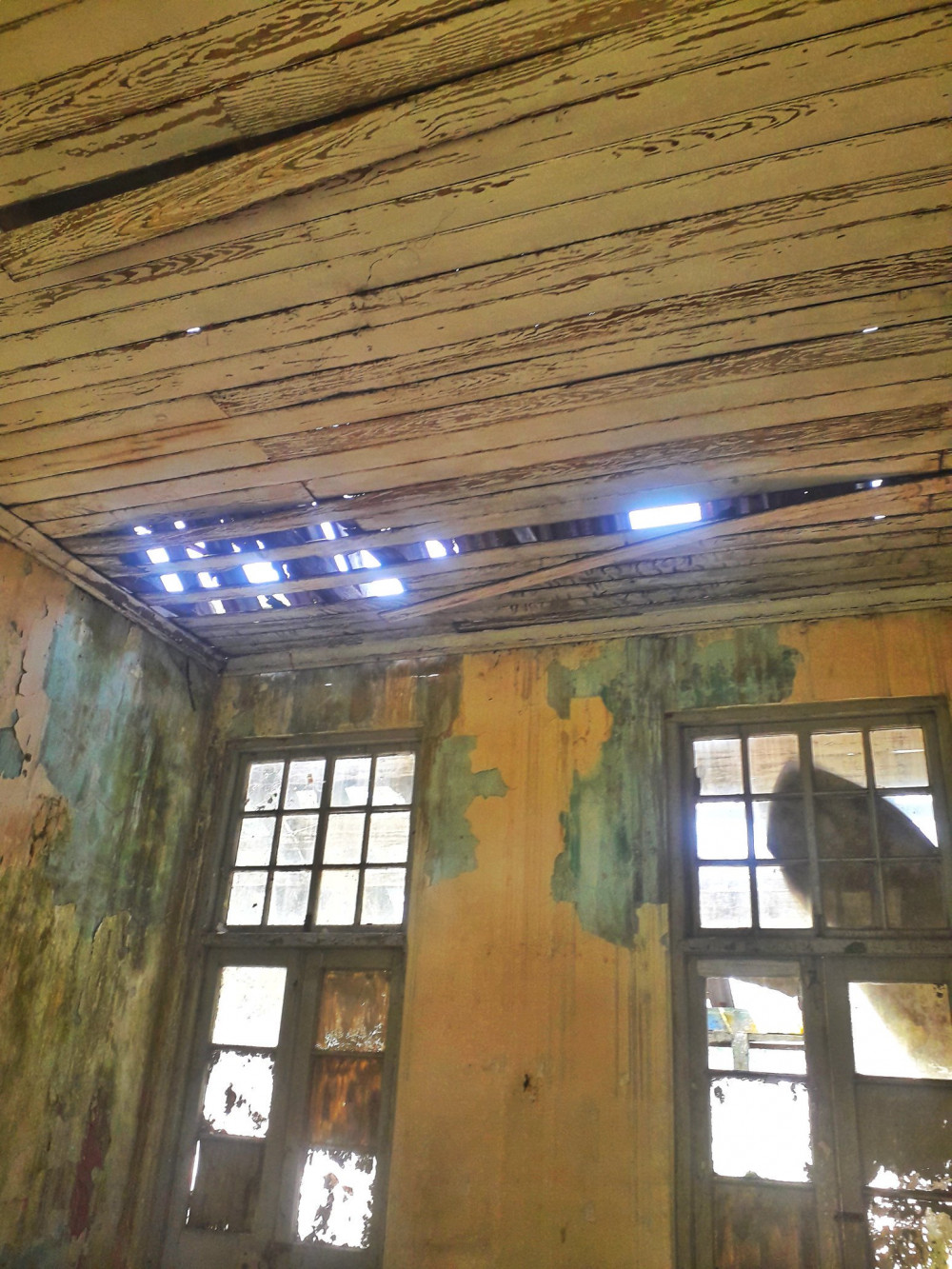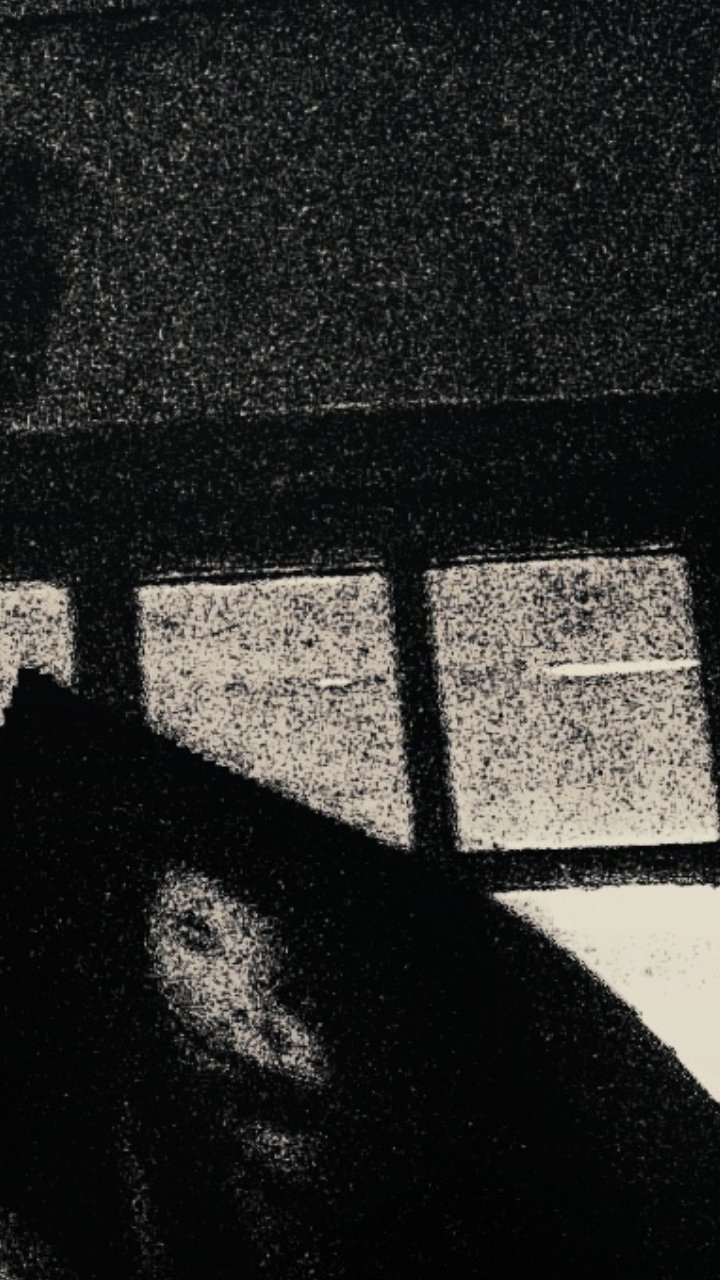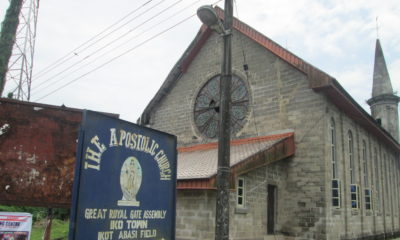Features
Harold Writes: My Encounter with the Ghost of Lord Lugard
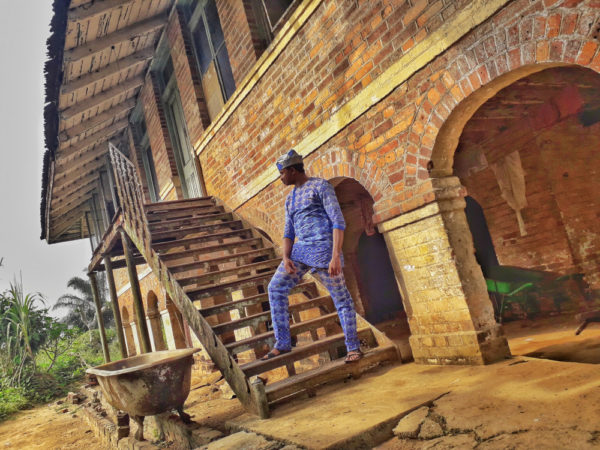 On 1st January, 2019, I had an encounter with the ghost of Lord Lugard when I visited his abandoned, and as I later realized, haunted residence at the coastal village of Ikpa Ibekwe, located in Ikot Abasi Local Government Area of Akwa Ibom State.
On 1st January, 2019, I had an encounter with the ghost of Lord Lugard when I visited his abandoned, and as I later realized, haunted residence at the coastal village of Ikpa Ibekwe, located in Ikot Abasi Local Government Area of Akwa Ibom State.
For purposes of clarity, the Lord Lugard I am referring to is Frederick John Dealtry Lugard, the last Governor of Southern Nigeria Protectorate, the last Governor of Northern Nigeria Protectorate and the first Governor-General of Nigeria. Yes, that Lord Lugard. Flora Shaw’s husband.
It is a tradition in my family that, no one steps out of the house on two specific days – Christmas day and January 1st – unless you’re going to church. My parents believe that, those days are specially targeted by men of the underworld to strike when mortals are merrymaking. But on 1st January, 2019, I went against my parent’s advice and headed for Lord Lugard’s residence in the company of my friend and my brother. Lugard’s residence was about an hour drive from Uyo, where we were. As we embarked on the trip, I was excited and scared at the same time. I had a sense of foreboding, but I didn’t know why.
I didn’t tell my parents where we were going. If I did, they definitely would have persuaded us not to go. We would have been inundated with tales of how unsafe January 1st usually is, and especially, how fetish the streets of Akwa Ibom would be that day. To be fair to my parents, many secret societies (read traditional associations) in Akwa Ibom usually choose January 1st to give sacrifices to their gods. Maybe, to thank them for the New Year? They usually hold a street procession as part of the ceremony.
The earlier part of our journey from Uyo was smooth and devoid of the foreboding I had when leaving the house. The serenity of most villages and small towns was mind-blowing. The sides of most roads were occupied by an infantry of green trees. All you see is green. Unlike Lagos. We drove past the Godswill Akpabio International Stadium, a.k.a Nest of Champions. The stadium is located along Abak road in Uyo. It was quite an edifice.
When we drove into Abak (another local government), the 1st landmark that got my attention was the Wellington Bassey Barracks, located at Ibagwa village in Abak. I saw soldiers standing at their makeshift posts along the fence of the barracks. I noticed the excitement on the faces of some of these men. They appeared to be in a more relaxed mode this period. But I became sad when I imagined their changed countenance when they get served with a letter deploying them to the North East. From Abak, we drove into Oruk Anam Local Government Area. The landmark that got my attention was the Nigerian Navy Military School at Ikot Ntuen village. I saw men in camouflaged T-shirts, engaging some young women in what I could only imagine were discussions of national security. I smiled.
The 1st manifestation of the foreboding I had when leaving the house was when we got to Mkpat Enin (another local government). Here, we encountered a crowd of juju worshippers who barricaded the road and chanted eerie cult songs. They were dressed in different colourful, but ragged attires, and brandished cutlasses at us. I wanted to take a photo of them, but my friend asked me to put my phone away, saying it could infuriate the group. I did as told. About 15 hard-faced boys with cutlasses surrounded our car. The boys started dancing while chanting noisily and striking their cutlasses against each other. I looked at my friend, then mouthed silently, “what do we do?” One of the boys dashed his head into the car through the window on my side, then withdrew it. Another boy looked at us with red, bloodshot eyes. Then a third boy dropped his cutlass on the bonnet of our car and started pouring libation! A passerby who spotted us, quickly signalled us to drop some money, screaming: appease the gods! We did as directed by throwing a naira note through the car window. It appeared the gods were appeased by our act as the boys immediately made way for us to drive through.
We heaved a deep sigh of relief as we sped off. But our relief was short-lived when our car came to an abrupt stop. The car was overheating. We quickly came out of the car and opened the bonnet. We discovered that, the water in the radiator had dried up and the alternator belt had slacked! But how was this possible? The car was fine when we left home. We looked around and noticed we were on a lonely road with thick bushes on both sides. The ground we were on had splatters of thick red. Blood? Some boys dressed in colourful, ragged clothes rode an okada past us. When they saw us, one placed a phone against his ear as if to make a call. We knew we were not on safe ground and we had to get out of there. Fast! Luckily for us, we were able to drive the car to a neighbouring village where we spotted a mechanic shop by the roadside. We engaged the mechanic to fix the car. As he did, we patronized a roadside coconut seller.
After our car was fixed, the rest of our journey to Ikpa Ibekwe, Ikot Abasi was relatively smooth. We only encountered a few more secret societies on processions. We had learnt our lessons the first time so we knew what to do on each occasion. The small town of Ikot Abasi reminds you of places like Epe and Badagry in Lagos. It is quiet, peaceful and devoid of the madness usually associated with big, industrialized and commercial cities. The indigenes of the town are basically palmwine tappers, fishermen, farmers and petty traders. The two major companies here (which we drove past) were ALSCON (an aluminium smelting company) and Ibom Power. We also saw only 3 bank branches – UBA, First Bank and Union Bank. My friend said GTB and FCMB moved out of the town because of low patronage. Most industries in the town had shut down. Even ALSCON was hardly functional. A lot of churches with colonial designs and yellow blocks of community schools with open fields lined up by the sides of the road. Some of the notable churches were The Salvation Army, ECWA and Eckankar.
As we drove on, we came to a small, busy village market. This was a sign that we had got to Ikpa Ibekwe village. We also spotted the Ikot Abasi local government council, Nigerian Prison service, a court by the road side, Civil Defence office and a hotel – Green Star Hotel. When we arrived at Lugard’s residence which is situate along Marina road in Ikpa Ibekwe village, we observed how deserted the whole place was. There was no sign of life. Lord Lugard’s 107-years old brick house sits in an open compound surrounded by trees and bushes.
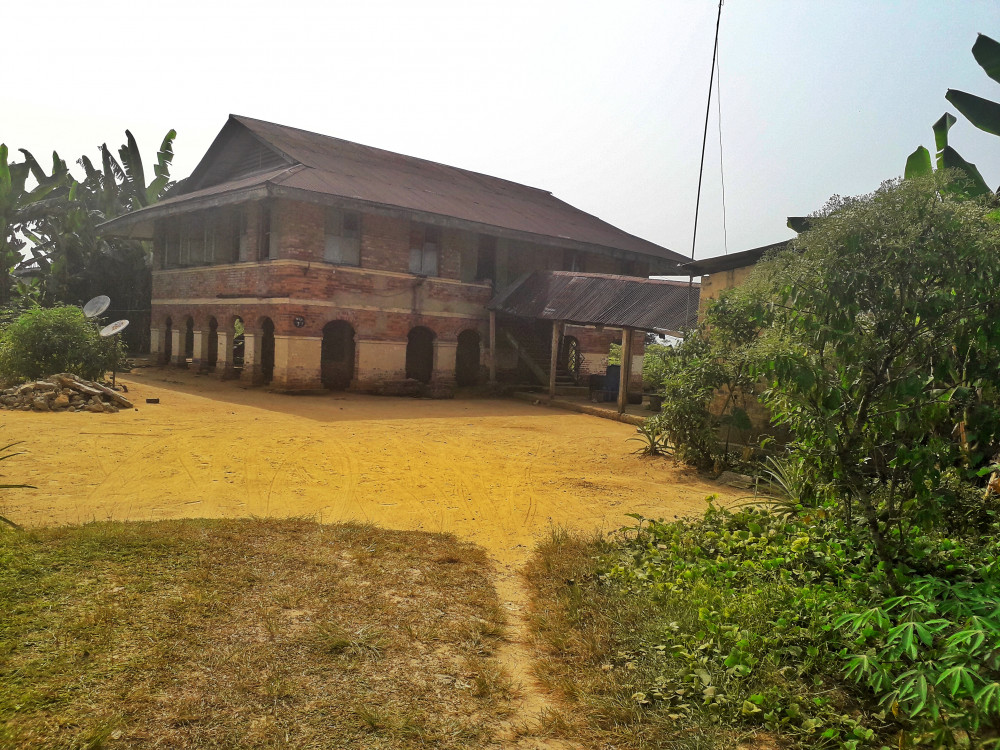 We stood from afar and took shots of the building. We looked around to see if we could ask anyone for permission to approach the building, but there was no one in sight. After about 20 minutes of indecisiveness, we decided to take our chance; we decided to approach the building.
We stood from afar and took shots of the building. We looked around to see if we could ask anyone for permission to approach the building, but there was no one in sight. After about 20 minutes of indecisiveness, we decided to take our chance; we decided to approach the building.
“Don’t go in!” a voice yelled from behind us. We turned around to see a woman in a black and red shirt and skirt. She had her hands behind her back like an examination invigilator would. “Don’t go in,” she repeated sternly.
“How did you get behind us?” I asked, given that we were the only people in that vicinity a few seconds ago. She ignored me, turned around and started walking away. We hurried after her. “Please we want to take closeup pictures of the building,” I said. “Why shouldn’t we go in?”
“The people don’t like pictures,” the woman answered.
“What people?” I asked.
The woman stopped to look at us. Then she turned to face Lugard’s building. She pointed towards the building. We followed her finger but didn’t see anyone. “The people who live there don’t like pictures,” she said. At this point, we were confused. We were sure we hadn’t seen anyone in that compound in the 20 minutes we had been around.
“There is no one there,” I said.
The woman smiled wryly. “Come, let me show you Amalgamation House,” she said. We followed her as she crossed Marina road to a compound opposite Lugard’s residence. I assumed the Amalgamation House formed part of Lugard’s apartment but later learnt it was Lugard’s office. The Amalgamation House is made of wooden floors and a zinc roof which had all deteriorated. Here, we saw the transistor radio, speaker, antique telephone and typewriter used by Lugard. They were old, dirty and of course, not working. The woman in red and black said the amalgamation of Southern and Northern Nigeria in 1914 was concocted here at the Amalgamation House.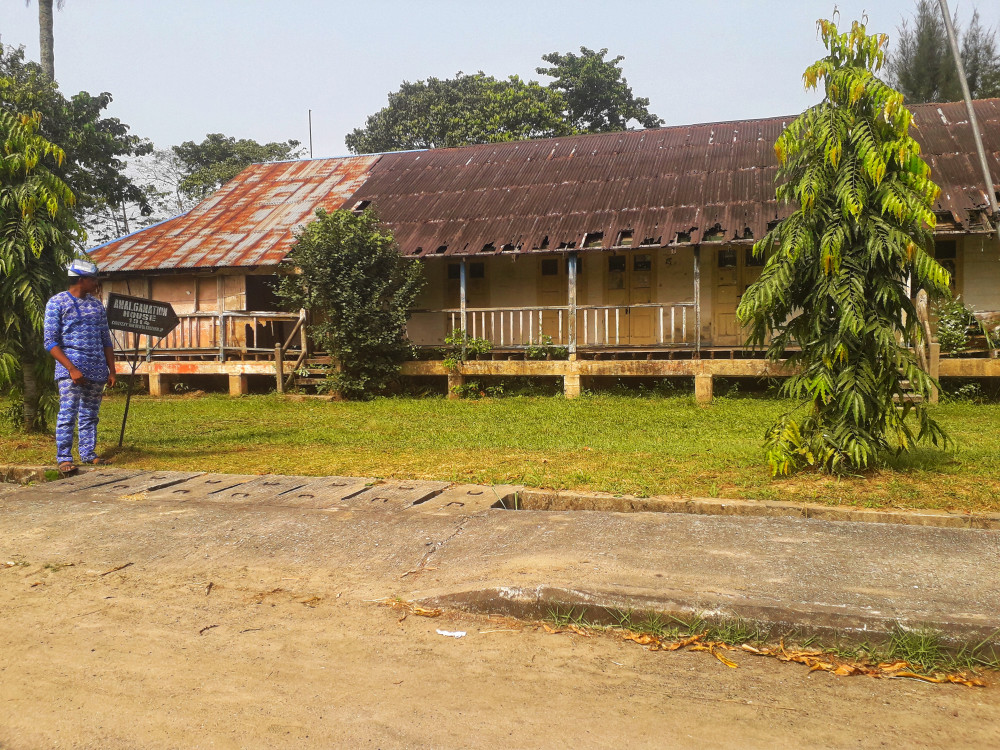
From my research, there are different accounts of where the Amalgamation Treaty/Order was actually signed. One account states it was signed here; another account states it was signed in Zungeru, Niger State; while another states, Britain. Whatever the true position, it can’t be denied that amalgamation plans were also orchestrated here. I wish this place was maintained and a copy of the Amalgamation Treaty/Order was preserved here. This place also played another important part in our history as a country. It is reported that, it was here that General Olusegun Obasanjo (acting for the Nigerian Army) and General Philip Effiong of the Biafran Army signed the declaration of cease-fire that brought to an end the Nigerian civil war in 1970.
While lost in thoughts, I heard my friend say “let’s get out”. I asked him why. I mean, we had only just arrived. He looked at me and muttered: what? I repeated my question, “why did you say we should get out?” My friend, still looking confused, said “I didn’t say anything”. I turned to my brother and asked if he had said anything. He shook his head. I turned to the woman in red. There was a blank expression on her face. It was obvious she did not utter those words.
“Let’s go to the District Office,” the woman said curtly, disregarding me. We followed her as she exited the Amalgamation House. We walked down Marina road to a brick-walled bungalow by the side of the road. The District Office is where a commissioned officer of the British Colonial Service operated from. This particular office in Ikpa Ibekwe is said to be the 1st headquarters of former Southern Nigeria Protectorate before it was moved to Calabar. This district was known as the Opobo District.
Opobo. You must be familiar with the story of King Jaja of Opobo. What you probably didn’t know is that, King Jaja’s commercial empire stretched to Ikot Abasi. Some accounts even state that he was an Ibibio man, born in Ikot Abasi and his birth name was Akpan. King Jaja was allegedly nicknamed Yoyo in Ibibio, but his name was corrupted to “JoJo” after he was sold into slavery to an Igbo man, and later “JaJa”. After he gained freedom from slavery, he established the kingdom of Opobo and with time, became too powerful for the colonial masters. He was therefore, arrested by the colonial masters, deported to Ghana, tried, convicted and exiled. It is reported that, when King Jaja was condemned to exile, he was brought to the “Bridge of No Return” which isn’t far away from the District Office, and transported through the Imo River.
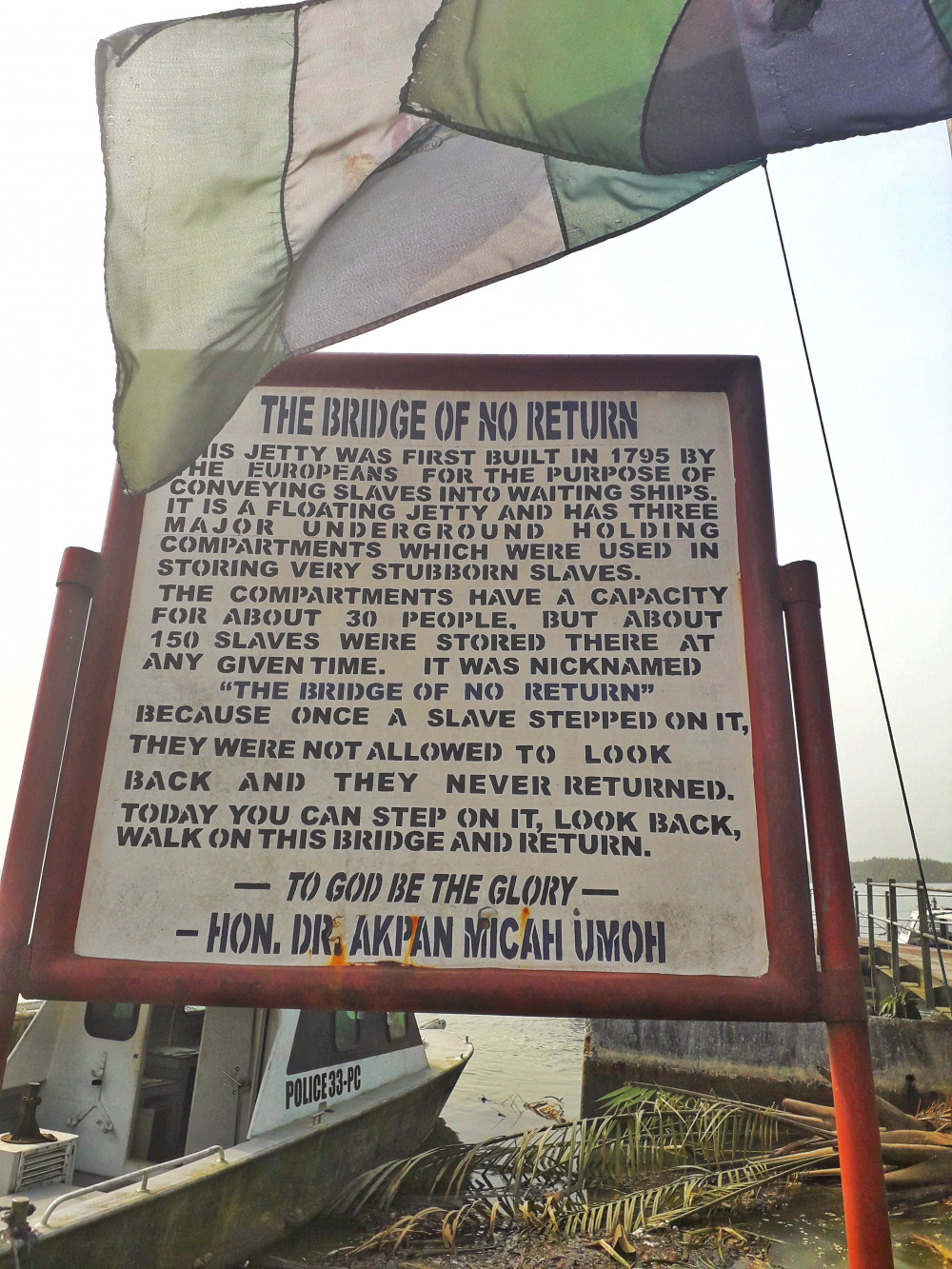
The Bridge of No Return is at the bank of Imo River. It was built in 1795. Here, our ancestors were sold into slavery. Once a person got on that bridge, there was no return. The Bridge is within close proximity to the Lugard residence, Amalgamation House and District Office. Not far away from the Bridge of No Return is a mock grave in memory of the Women’s War of 1929 (also known as the Aba Women’s Riot). It is reported that, part of that war was fought in Ikot Abasi. Some Ikot Abasi women, who were led by Madam Udo Udoma, the mother of Sir Udo Udoma, were protesting the imposition of taxes on women, at the District Office. The British Police opened fire on these unarmed women.
When we were done at the mock grave site, the woman in red and black took her leave. We thanked her for her service and showed appreciation. Before leaving Ikpa Ibekwe, we decided to take one more look at Lugard’s residence. This time, we stepped into the compound. To our shock, we saw a number of people who hadn’t been there the 1st time we came – an elderly woman and two men. There was something scary about their seemingly sudden emergence, so we trod with caution. We told them of our mission and sort permission to take pictures. To our surprise, they agreed without any fuss. I remembered the woman in red and black and wondered why she said the people here didn’t like pictures. Anyway, I quickly took pictures beside the building.
When we were about leaving, we thanked the people who allowed us take pictures and videos of the building. I also quickly took another video of the building’s surrounding. The residence had a courtyard, kitchen, beach garden, amongst others. It was quite the luxurious residence.
I left Ikpa Ibekwe in a lot of pain, angst and with unanswered questions. I wondered why the government would neglect such a place with powerful stories of our history. I also thought about people at the Lugard residence. I would like to know their individual stories.
When I got home, I went through the pictures I took at Ikpa Ibekwe. That was when I discovered something very chilling at the Amalgamation House. I filtered one of the pictures I took at the Amalgamation House and noticed that, a figure was standing behind one of the antique glass doors.
That figure was neither myself, my brother, my friend nor the woman in red and black.
***
To read a more comprehensive report on Harold’s trip, read his thread on Twitter.

